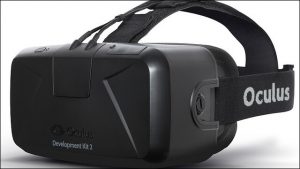A school classroom is a second home to most students, a familiar environment where the worlds of academic and social mix to provide a well-rounded learning environment. But for a child with autism, the classroom can be a stressful place filled with busyness and performance pressures that can make it difficult for them to learn.
But things may soon become easier for these students. Researchers now believe that virtual reality can aid autistic children in the classroom.

Virtual reality is being examined as a possible teaching aid for this setting because it can provide a way for those with autism to cope and manage being in stressful situations. It can also aid in breaking down the barriers of perception and social challenges that prevent them from learning. This would work well because virtual environments have a consistency and predictability that the real world does not provide.
When taking in the experiences of the everyday world, the challenge that autistic people face is that their brains struggle to block out external stimuli; internally, this results in sensory overload. In social situations, this can resemble or materialize as anxiety or panic attacks in crowded or loud situations. The demands of the school classroom can also recreate such stresses.
Related: ‘Sesame Street’ Welcomes First Muppet With Autism
By using a device called the Oculus Rift, Dr. Nigel Newbutt is helping autistic children make advances in the classroom. The device includes 3D high resolution video as well as audio and tracking technology. The combination of these elements creates an experience that can engross users in a completely virtual world.

“If used appropriately,” Dr. Newbutt told The Independent Online, “virtual reality can provide portals into a neurotypical world, and suggest ways to help navigate this world.”
When Dr. Newbutt and his research team at Michigan State University examined how virtual reality can help the autistic community, they zeroed in on the user’s physical experiences and how VR could assist them in relating to real life scenarios. Dr. Newbutt says the good thing about a virtual reality classroom is that it is predictable and the reaction to the players would always involve consistency. But he also shared a challenging aspect to using this technology for those with autism spectrum disorder.
Related: Virtual Reality Could Help Amputees Deal With Phantom Pain
“[More research must be done to uncover where there] is a risk of stay in…immersing in virtual reality without any bridging of awareness and skill to the real world,” says Dr. Newbutt.

The human avatars in virtual worlds accessed by VR devices like the Oculus Rift are a benefit for those with autism because they have less unpredictable physical movements and use simplified facial expressions and body language. This is a great help to the autistic community because they are then less apt to misread someone or their intentions.
The possibility of using virtual reality in future classroom settings could provide a flexible and affordable support system for autistic people in controlled academic or learning environments. It can also help them navigate bigger and more complex situations in the outside world like traffic, subway stations, and music and sporting events. Ultimately, VR could support the autistic community in making choices that can make their lives more manageable and enjoyable.
Dr. Newbutt says this about the goal of his VR training sessions: “Their real potential is for those on the autistic spectrum to gain enough understanding of the neurotypical world to be able to choose what to take on in their pursuit of self-sufficiency and happiness. We are gradually shifting perspectives from deficits to strengths.”
Ronke Idowu Reeves is a writer and journalist who hails from Brooklyn, NY. Her news and entertainment stories have appeared on WABC-TV-New York, Fox News Channel, VH1, BET.com plus in Sundance Film Festival’s Sundance Daily Insider and People Magazine.


![How To: ‘Fix’ Crepey Skin [Watch]](https://cdn.vitalupdates.com/wp-content/uploads/2017/05/bhmdad.png)












